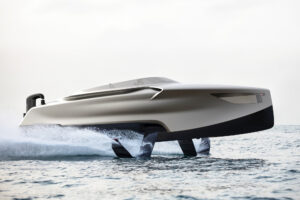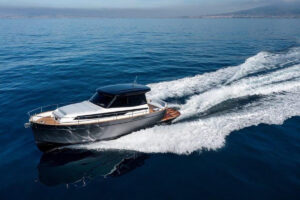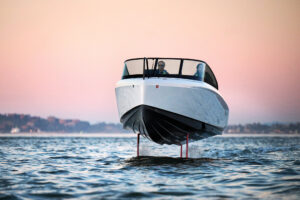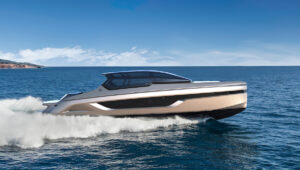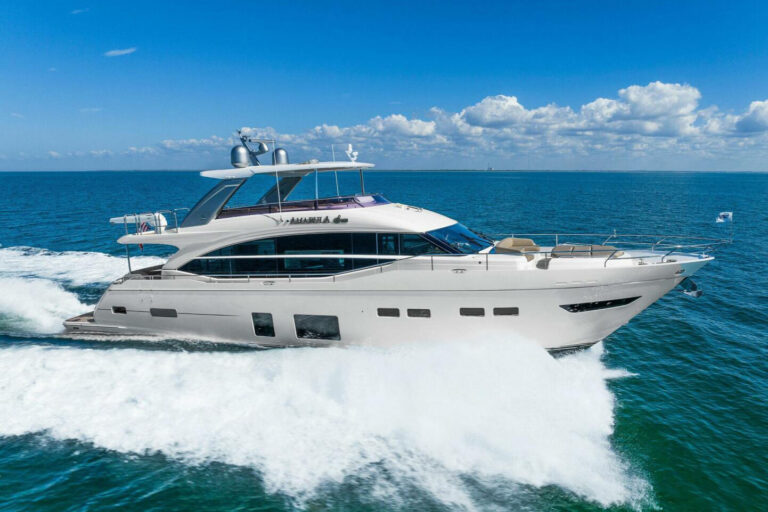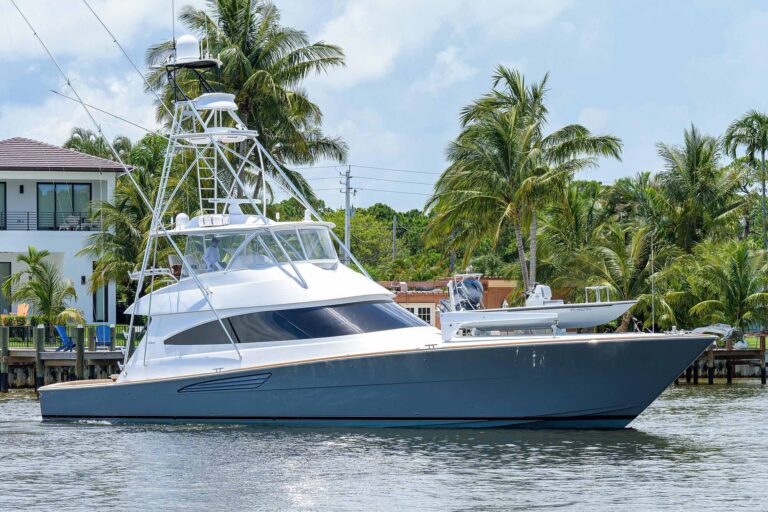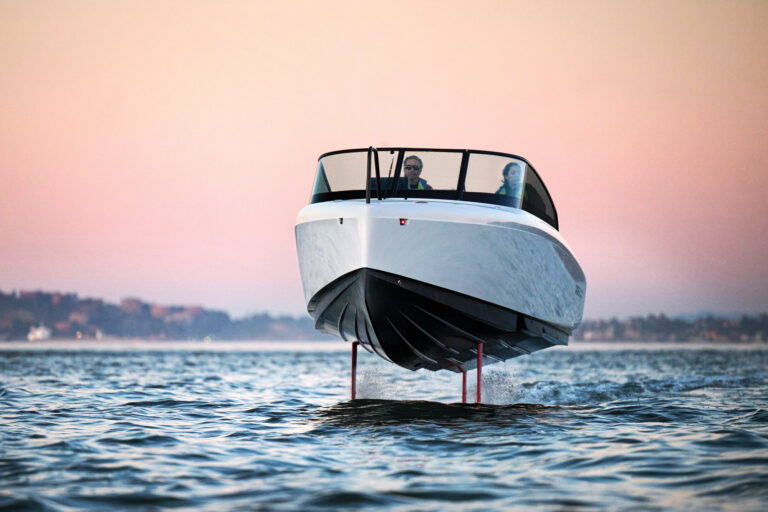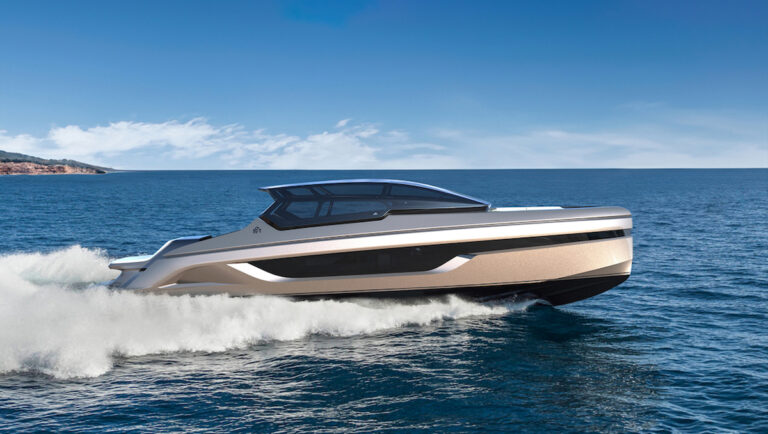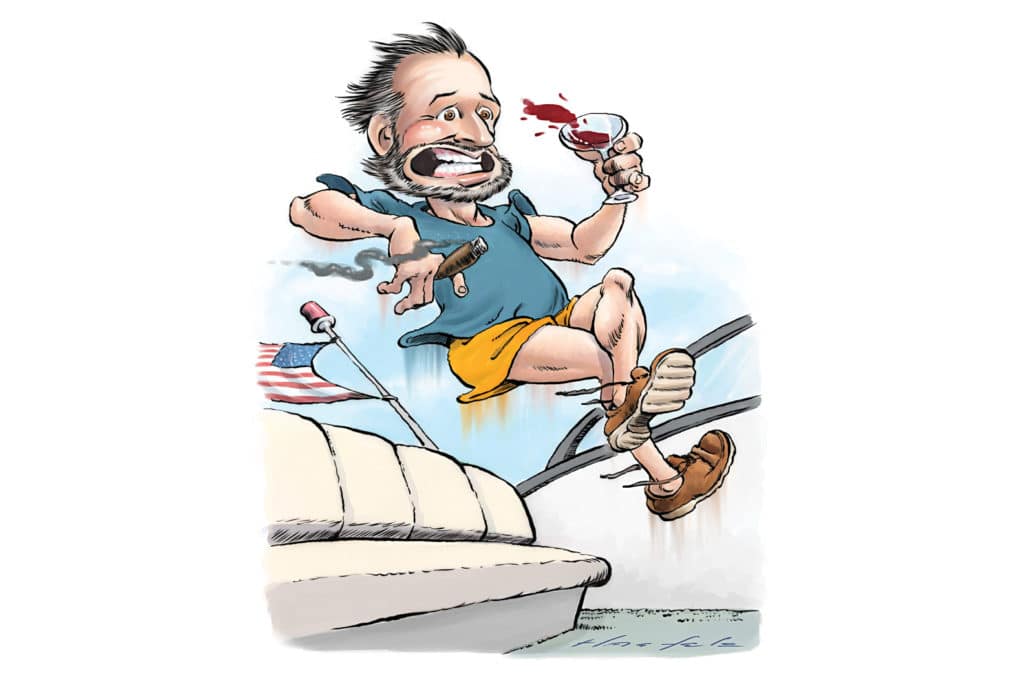
For years, I’ve heard the same question at boat shows: “How fast?” It’s second only to, “Where’s the bathroom?” and “How much?” We boat nuts seem obsessed with pushing the laws of Newton, Bernoulli and Froude. I’m no numerologist, but after 35 years of measuring “fast” during sea trials, I can assure you there’s no magic number.
Fast is simple. It’s mostly about weight and horsepower. A designer must be a competent noodler of numbers, and a builder must be attentive to detail. Forget patented, breakthrough bottom concoctions. Nothing sours “fast” faster than bungling a boat’s weight and center of gravity.
This simple math can be challenging because builders and designers are genetically incompatible. A notable boatbuilder made this clear to me early in my design career. He assured me that the designers he’d worked with over the years — my heroes — were generally incompetent and mostly drunks. He simply ignored their drawings and never bothered wasting paint on a boot stripe until after launching and “ballasting.”
Ballast is kryptonite to fast powerboats. Unfortunately, given the model-home layouts and outfitting we demand, sometimes we have no option.
“If you lavish horsepower on an undeserving vixen, you might find the lady you knew at 30 knots is a witch at 40.”
I’ve seen lead ingots stashed under fish boxes and molded into false bottoms. One boat even featured a lead monolith that weighed as much as a Ford Pinto. The builder had cleverly disguised it as a water tank.
Combining comfort and “fast” is not so simple. Here’s the odd thing: Good form combined with the added inertia that weight provides at speed is actually an asset. Consider the “thrill” of the light, flat-bottom, 1960s 13-foot Whaler versus the soft, albeit wet, ride of the relatively heavy 1960s deep-V Bertram 31 Convertible. Designers have been toying with shapes in between ever since — some more successfully than others.
I have been “thrilled” by a 40-foot fast express that tossed me about like a badminton birdie. Her modified-V bottom was closer in form to a paddleboard and modified my own bottom. I’ve been semisubmerged while attempting to find the “fast” in a 60-foot fast motoryacht that was too full-figured for the job though her full-beam master bath and full-size washer/dryer did come in handy.
Fast is often loud when the diesels weigh as much as the boat’s structure. I’ve measured over 90 decibels at the helm of large, fast convertibles. That’s somewhere between blending industrial-grade mudslides and riding a two-stroke mower.
Fast is fickle. If you lavish horsepower on an undeserving vixen, you might find the lady you knew at 30 knots is a witch at 40. Bad form and balance, or poorly chosen driveline and propulsion schemes, are the usual suspects, and the results can be surprising. I’ve found myself heading to port while turning to starboard, coming about or not turning at all.
If I’ve learned anything from all the boats that I’ve been fortunate to sea-trial over the years, it is that there’s no magic number. Friends, fast is overrated. In addition to requiring more cash and a capable designer and a builder who communicate, achieving more knots always requires more compromise.

